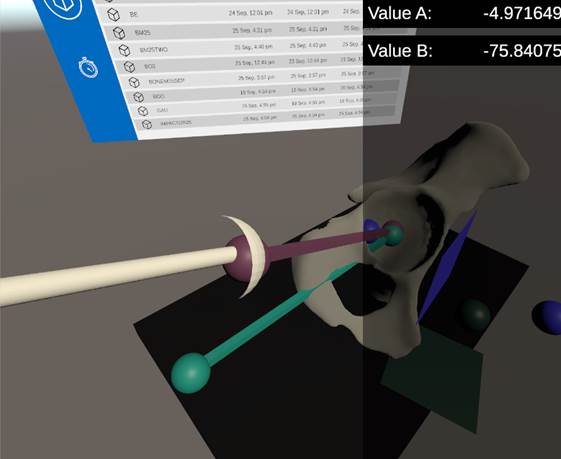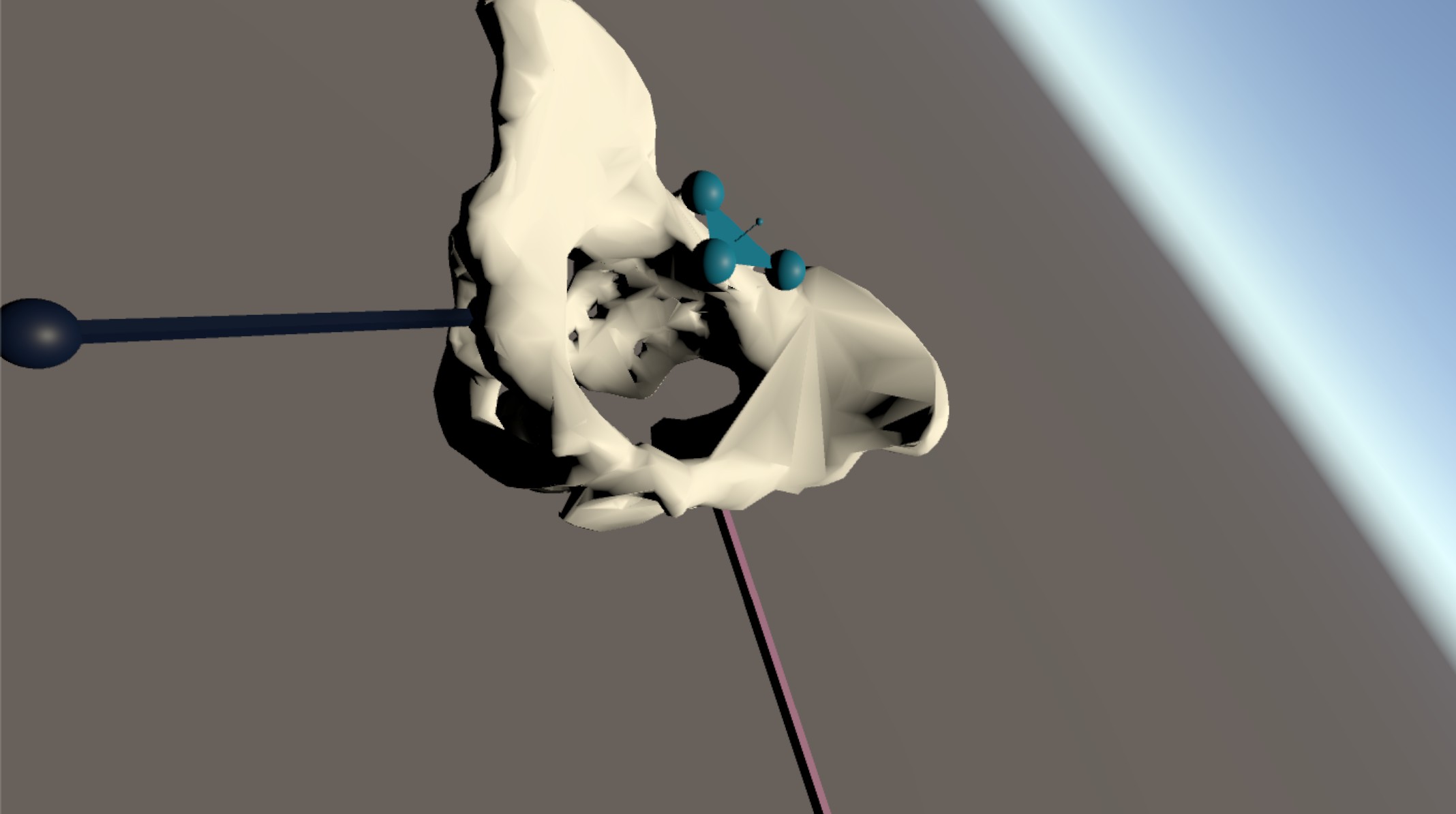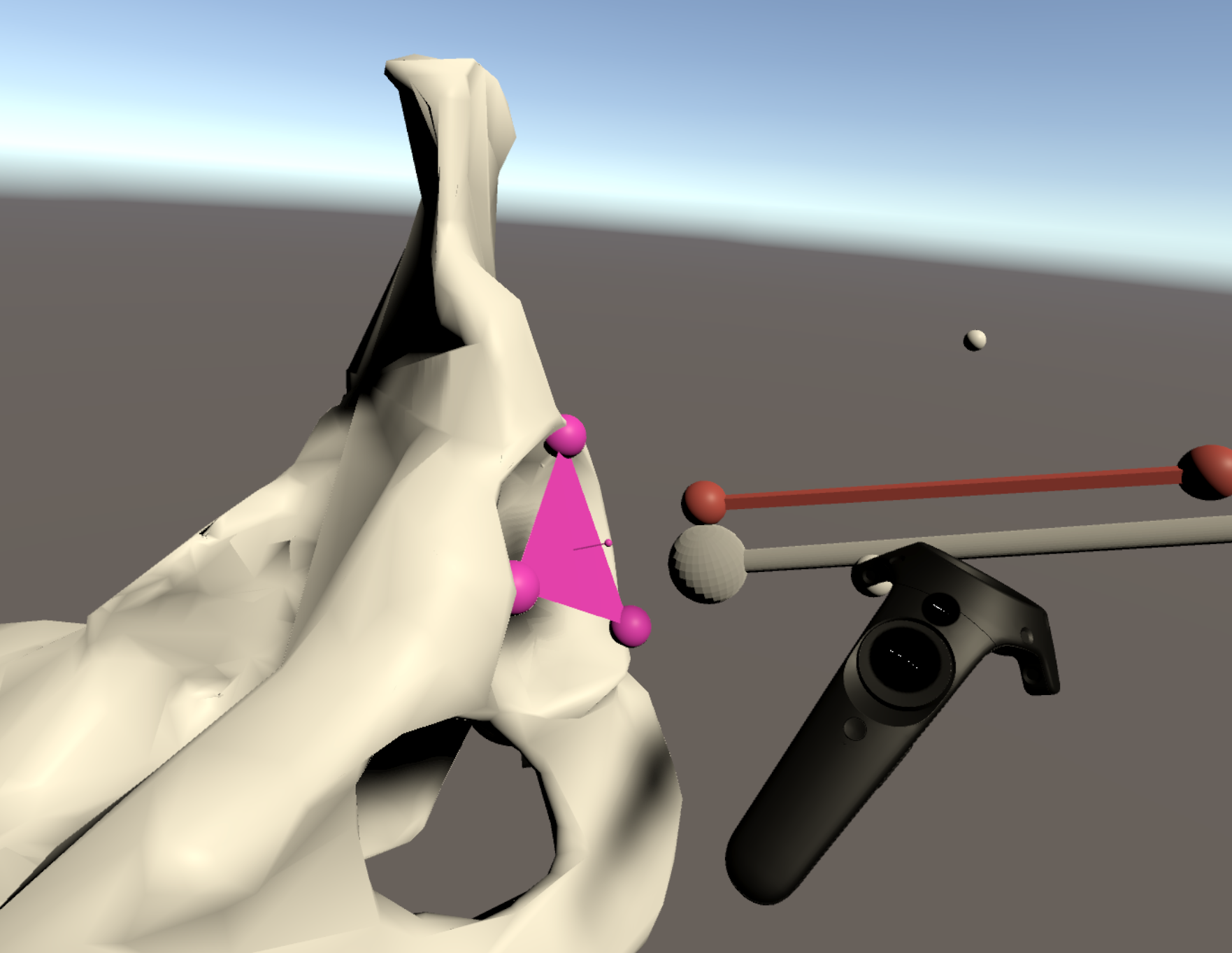
About AescularVR
Academic / Clinical Leads
Prof. Jonathan Rees & Dr. Daniel Howgate Nuffield Department of Orthopaedics, Rheumatology and Musculoskeletal Sciences (NDORMS)
Video 1:
What is AescularVR?
The AescularVR software has been designed to track and record positions, distances and movements of real world objects
in space using the HTC Vive VR system. This system
utilises wireless trackers which can be mounted onto real world objects, such as surgical instruments and simulated
body parts. Following calibration, these trackers can be used to dynamically determine the 3D positioning of each
object in relation to each other.
AescularVR has now been published: Orthopaedic Proceedings (2021)
How is AescularVR set-up?
Following the secure attachment of the trackers to objects of interest (minimum 2), AescularVR takes you through setting up and calibration of the trackers on the objects. This process is relatively straightforward and takes approximately 15-20 minutes before data acquisition can commence. Positional data between the trackers (and objects of interest), including computed relative angles, distances, and movements may then be recorded in either dynamic or static modes. The recorded data may then be analysed following the session.
What is AescularVR used for?
To date, our experiments using AescularVR have been focussed around determining the position of surgical implants used in primary total hip replacement (THR).
The human hip joint is a ball-and-socket type joint between the pelvis and femur bones. The bones within a healthy hip joint are normally lined by a layer of specialised smooth connective tissue (articular cartilage), which in conjunction with a small amount of synovial fluid (joint fluid) provides almost frictionless movement of these bones against one another. If the articular cartilage becomes diseased, injured, or eroded (e.g. from osteoarthritis, infection, or trauma), then movements at the hip joint may become restricted (stiffness), or painful. A THR is an effective surgical treatment for the symptoms of advanced hip joint destruction, which are not controlled with non-operative treatment modalities.
A THR involves the replacement of the damaged cartilage and bone on both sides of the joint using two primary prosthetic (artificial) components - the femoral stem & head, and the acetabular cup & liner. The acetabular cup is normally made of metal, which is lined by a plastic or ceramic insert, and the femoral stem is also normally made from metal, with metal or ceramic ball positioned on top. The positioning of these two components is critical in order to maximise the function (e.g. range of joint movement) and reduce the incidence of dissatisfaction or complications (e.g. dislocation, leg length discrepancy, or early failure) following a THR.
Extensive training is required in order to equip a surgeon with the necessary skills and judgement to accurately, reliably, and efficiently achieve the optimal component positioning during a THR operation. The AescularVR system allows an accurate real-time assessment of the positioning of these two components during a simulated THR. This will allow surgical trainees to practise component implantation in the safety of a non-clinical environment, with accurate real-time feedback of their performance. With time and practise, these transferable skills may be used on real patients within the operating room under the supervision of more senior surgeons, This in turn may hopefully result in an improved accuracy, reproducibility, and efficiency of optimal component positioning during a THR, and possibly improved patient functional outcomes with a reduction in post-operative complications.
How accurate is AesuclarVR?
Our experiments have demonstrated the accuracy and reliability of the AesculaVR system in comparison to other validated motion tracking systems within a laboratory environment. These findings are also supported by recent research published by NASA [ pdf].
How expensive is AescularVR?
This system is significantly more cost effective than other commercially available optical motion tracking systems (typically less than £1000 including 4 trackers and HTC Vive Kit).
What are the other potential uses for AescularVR?
AescularVR is an adaptable tracking system, which may be modified for use in a range of situations that require an accurate registration between objects in 3D space, and subsequently allow the measurement of distances and angles between them. This system therefore has a wide range of potential applications within the field of surgical training and education, particularly orthopaedic surgery.
Gallery


